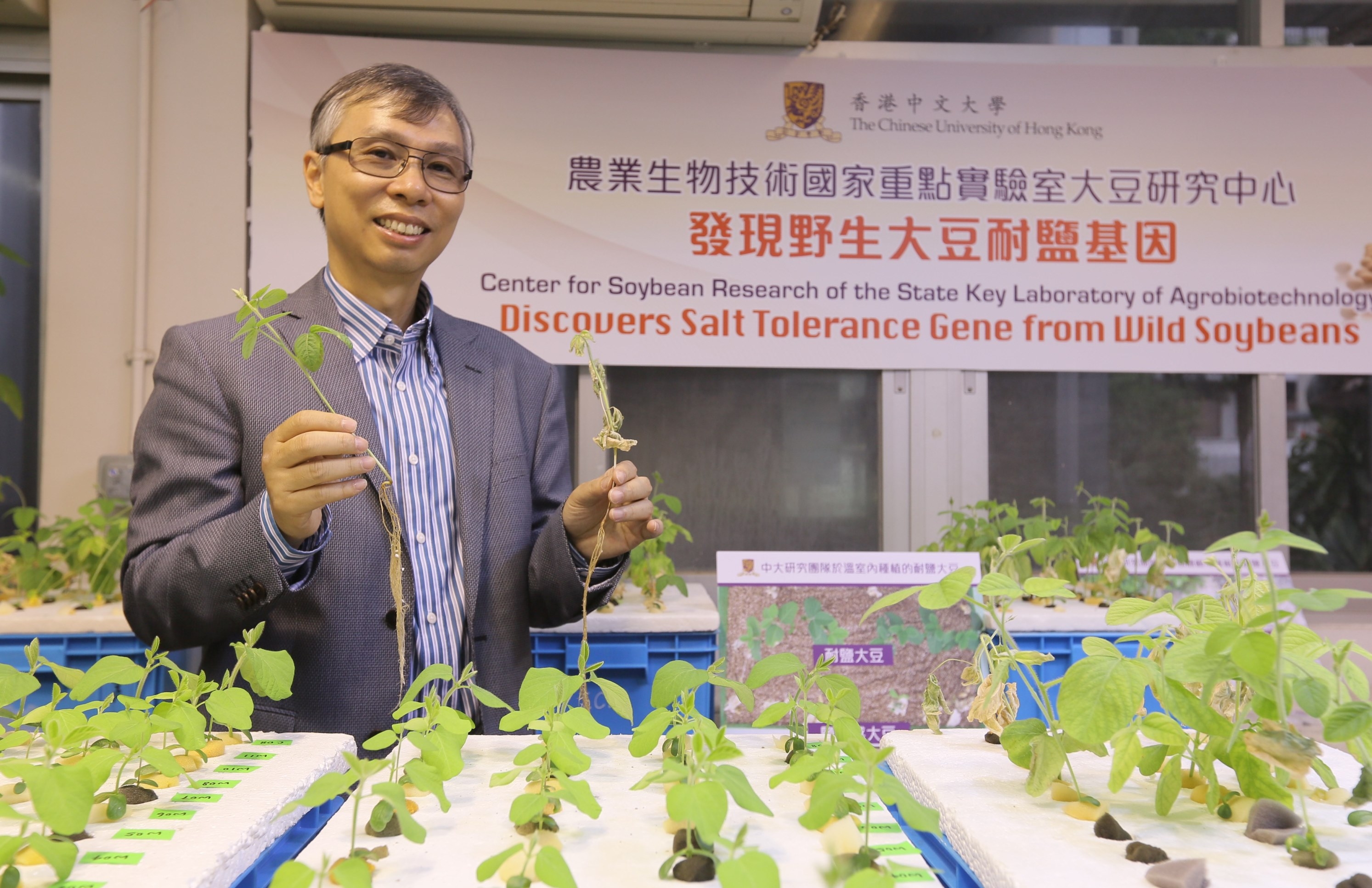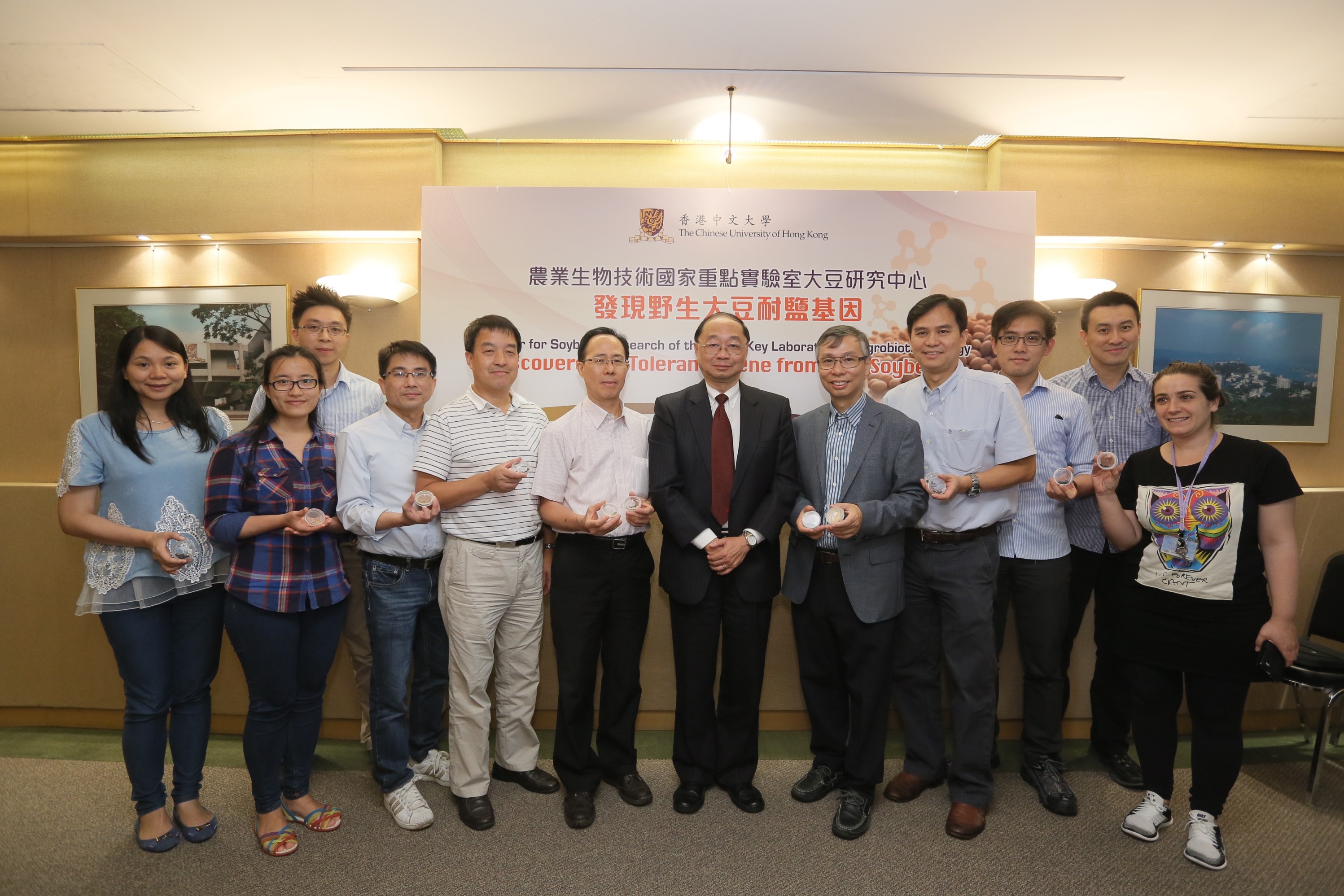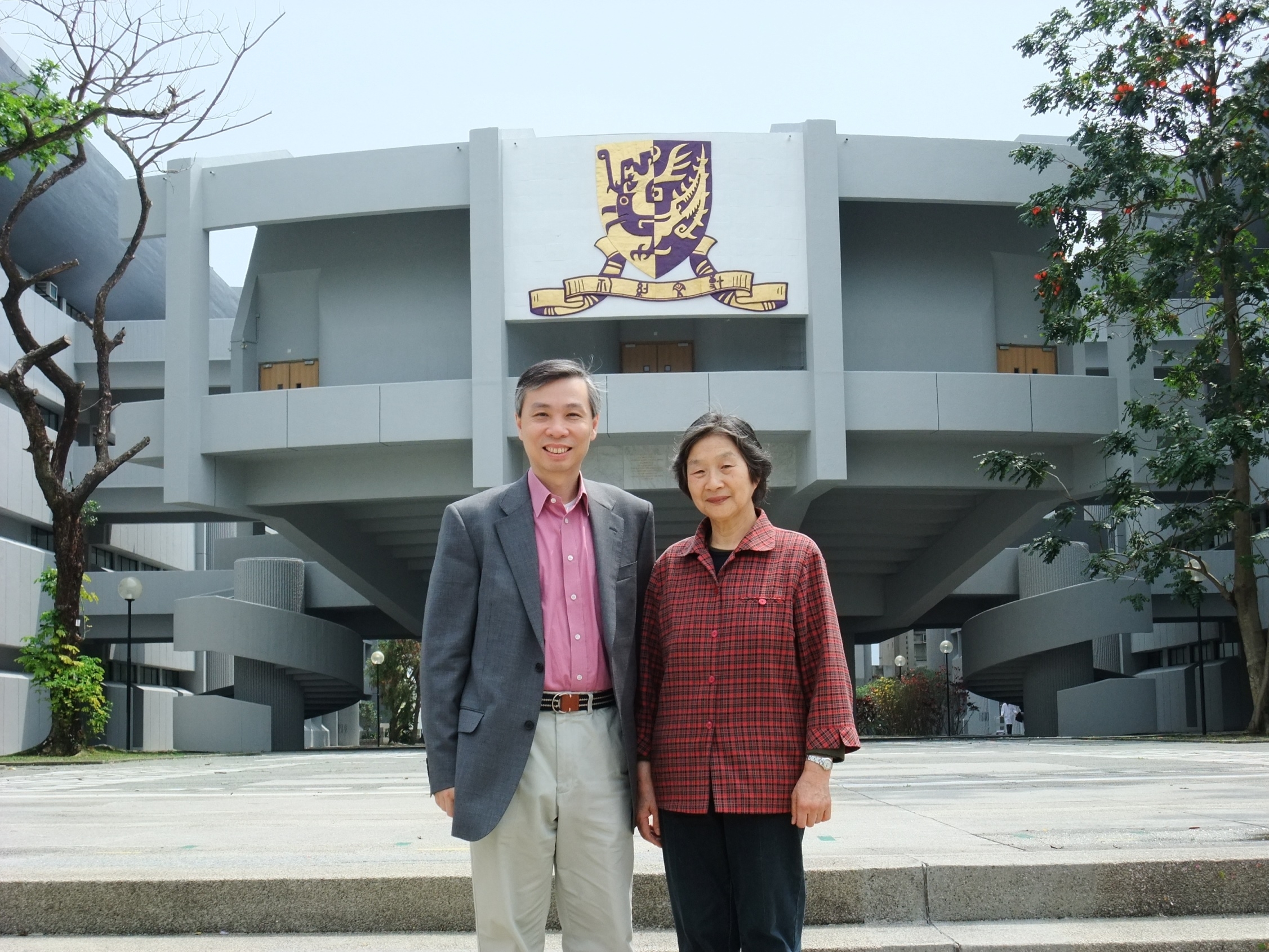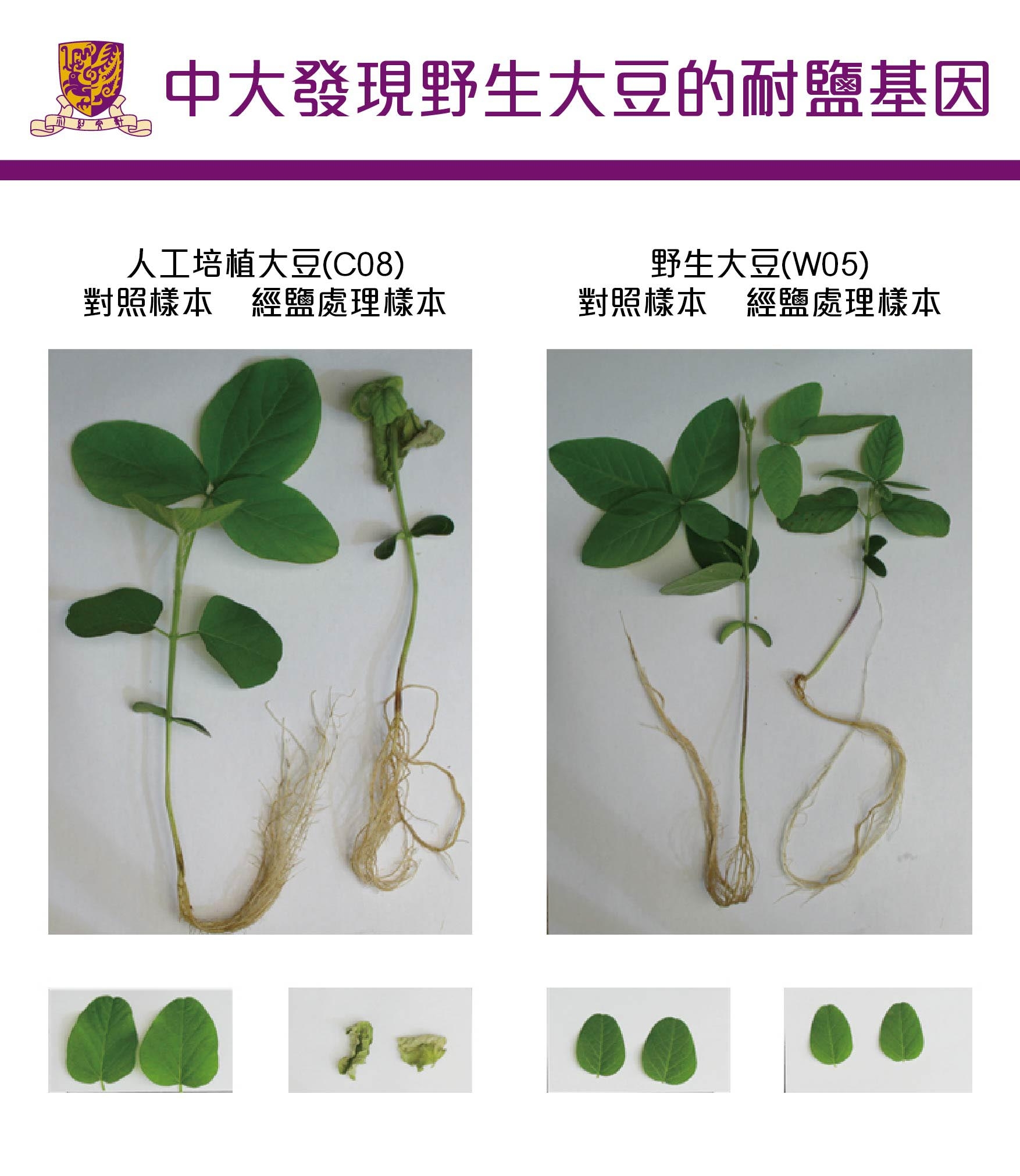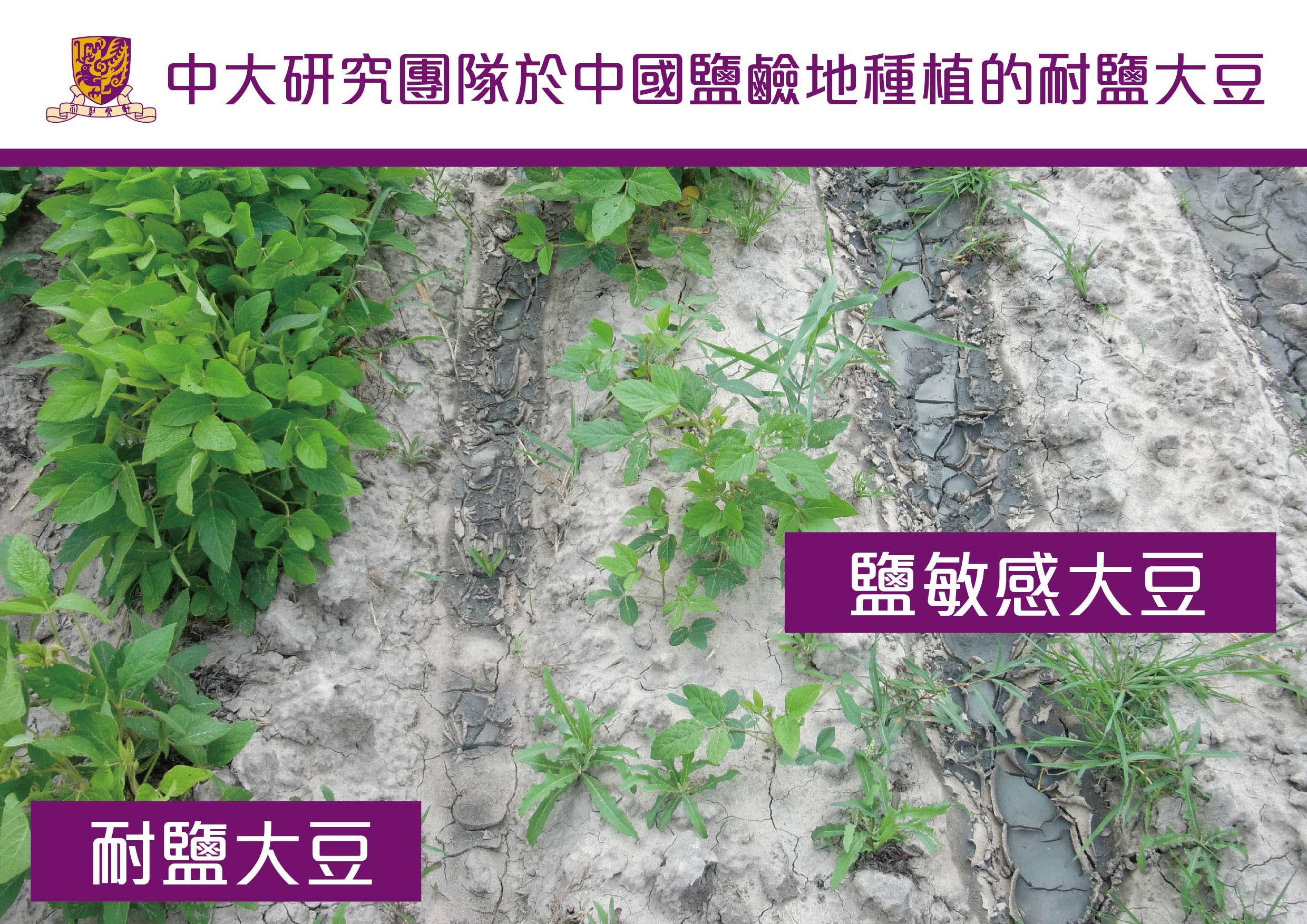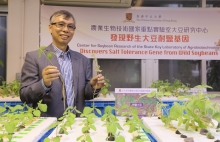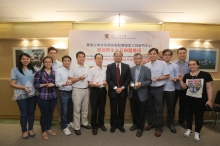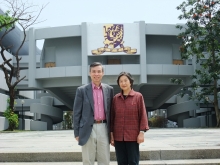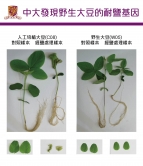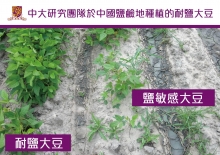CUHK
News Centre
CUHK Professor Finds Salt Tolerance Gene from Wild SoybeansA Possible Way to Alleviate Salinization Problem of Farm Lands
A research team led by Prof. Hon-Ming Lam, Director of the Center for Soybean Research and Professor of the School of Life Sciences at The Chinese University of Hong Kong (CUHK), has successfully identified and cloned a major salt tolerance gene from wild soybeans, after over 10 years of rigorous research and field work. It is a milestone in the mass production of high quality salt tolerant soybeans, a stage reached which will eventually benefit agriculture in China and worldwide. This finding was recently published in Nature Communications, a multi-disciplinary scientific journal ranked just after Nature and Science.
Soybean, first domesticated in China, is the third most important cash crop in the international trade market. Further to its high nutritional value, soybean is also a source of biodiesel and cultivation of soybean can replenish soil nutrients. Due to the reduction of arable lands and fresh water resources in China and the world, the production of soybeans could not meet the demand of the growing population. Salinization poses a severe threat to agricultural productivity affecting more than 20% of irrigated lands globally. Furthermore, cultivated soybeans under prolonged human selection may have lost genes for adaption to adverse environments. Production of stress tolerant soybeans enables a better use of marginal and low-fertility lands, and hence could promote sustainable agriculture.
In 2010, Professor Lam published a cover article in the renowned scientific journal Nature Genetics, reporting the decoding of 31 wild and cultivated soybean genomes that revealed a much higher biodiversity in wild soybeans. The finding suggested that the wild soybean may contain genes that enable a better survival in adverse environments. This project has been coined the name ‘Soybean Home-Coming’.
Unveiling novel genomic information for crop improvement
Over the past 10 or more years, Professor Lam and his team have been searching for the salt tolerance gene from highly adaptive wild soybeans. Through collaborations with colleagues in BGI-Shenzhen and the Chinese Academy of Agricultural Sciences, Professor Lam adopted the state-of-the-art high throughput genome sequencing technology to construct soybean genetic maps. Together with multi-year field and greenhouse recording, Professor Lam’s team successfully identified key genetic regions that control 11 important agronomic traits of soybeans. Finally, Professor Lam’s team applied molecular biology techniques to clone the salt tolerant gene from wild soybeans and functional tests were successfully performed. This ground-breaking finding can greatly enhance the efficiency of breeding for salt tolerant soybeans. Professor Lam has started to work with soybean breeders in China to produce soybeans that can be grown on saline lands, via non-GM methods. Meanwhile, Professor Lam and his team has continued their experiments in semi-arid and arid lands in Northwest China, with a goal of identifying drought tolerant genes from wild soybeans. The ultimate objective is to produce ‘super-soybean’ that is tolerant to both salt and drought.
Unrelenting academic search for a common dream
Apart from the origination of soybeans that kindled Professor Lam’s continual passion in soybean research, his work also carries further meanings, ‘Soybean research is a challenging academic question that has an important application value. My unrelenting search for the salt tolerance gene of soybeans is also driven by my promise to a senior scientist in this field. In 1998, I met Prof. Guihua Shao via the introduction of the Academician Prof. Yunliu Fan. Professor Shao devoted most of her career life in the field research of salt tolerance in soybeans. Limited by her age and lack of proper facilities, she could not complete the study of salt tolerance mechanism in soybean by herself. I proposed to have my team from CUHK adopt new technologies and new strategies to achieve this goal. For more than 10 years, Professor Shao has passed on her field knowledge to me and to my students without reservation. We have become close collaborators and friends. I also pledged to deliver my promise.’ The success of this research project is a result of selfless devotion of scientists from different generations toward their common dream.
About the State Key Laboratory of Agrobiotechnology, Partner Laboratory in The Chinese University of Hong Kong
The Center for Soybean Research is a unit under the State Key Laboratory (SKL) of Agrobiotechnology (Partner Laboratory in The Chinese University of Hong Kong). The laboratory was established essentially to tackle the pressing demand of food supply by increasing yield, food safety and nutrition in a country of a billion-plus people. The laboratory builds on the close partnership between CUHK and China Agricultural University, both leaders in agrobiotechnology. The two universities work together on the development of molecular biotechnology and its practical applications in terms of the increase of yields and enhancement of the nutritional value of crops.
Prof Henry Wong, Dean of Faculty of Science (middle), Professor Lam (5th right) and his team members at the Center for Soybean Research, CUHK.
Prof. Guihua Shao passed on her field knowledge to Professor Lam and his students without reservation.


